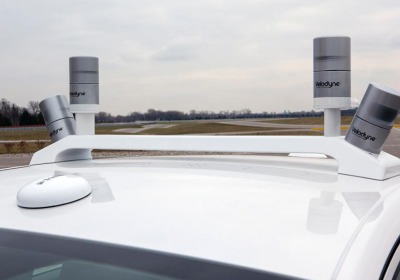Ford unveils Automated Fusion Hybrid Research Vehicle
Fri, 13 Dec 2013
Ford has officially revealed their Automated Fusion Hybrid Research Vehicle. Created in a partnership with University of Michigan and the State Farm insurance agency, the autonomous Fusion Hybrid is designed to test driverless car sensor technology.
The project is the one of the results of more than a decade of work in automated vehicle technology on the part of Ford. The shown prototype and others like it are designed to test driver-assist technologies and autonomous car sensing systems. The vehicle uses four infrared light sensors relying on LiDAR (Light Detection and Ranging) technology to scan the road 2.5 million times per second, creating a real time three-dimensional map of its environment and scanning for obstacles.
The LiDAR technology bounces infrared light off of everything within 200 feet of the vehicle, and the sensors can track both stationary and mobile objects around the vehicle. The LiDAR sensors on the Ford are actually sensitive enough to detect the difference between a paper bag and a small animal at a distance of nearly a football field.
"The Ford Fusion Hybrid automated vehicle represents a vital step toward our vision for the future of mobility," said Bill Ford, Executive Chairman of Ford Motor Company "We see a future of connected cars that communicate with each other and the world around them to make driving safer, ease traffic congestion and sustain the environment. By doing this, Ford is set to have an even greater impact in our next 100 years than we did in our first 100."
Ford
The LiDAR sensors on the roof detect everything within 200 feet of the vehicle.
The technology of the day allows prototype and production cars to be able to do a great many things that are viewed as stepping stones to completely automated cars, like the ability to park themselves and to detect dangerous driving situations and apply the brakes. Precursor technologies like Blind Spot Information System, active park assist, and lane-departure warning can already be found in the number of Ford's production vehicles and other manufacturers' vehicles. It will be the development of these technologies that Ford is hoping will eventually lead to completely autonomous vehicles.
"In the future, automated driving may well help us improve driver safety and manage issues such as traffic congestion and global gridlock, yet there are still many questions that need to be answered and explored to make it a long-term reality," said Raj Nair, group vice president of Ford global product development.
By Jay Ramey

